PBSUCCESS operation. How the CIA arranged a military coup and a war in Guatemala
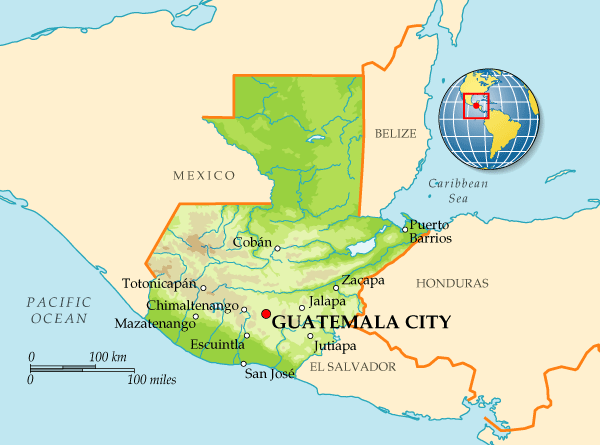
Guatemala as a "banana republic"
The largest among the Central American countries in terms of population and territory is Guatemala. Currently 14,3 million people live here. The groups of the indigenous Indian and the dislocated population are approximately equal in number. Métis (descendants of mixed marriages of Spanish colonists with Indians) make up 40% of the population of the country, Indians (Maya family people - Quiche) also make up about 40% of the population of the country. Europeans and their descendants are in the minority in Guatemala - there are no more than 20% of the population, and in addition to the Spanish Creoles the Germans also live in the country. Finally, a small group of the population are Garifs, or Black Caribs - descendants of mixed marriages of Indians and Afro-Caribbean slaves, imported from the islands of the West Indies to the south-eastern coast of Guatemala. From the middle of the XIX century. in Guatemala, immigrants from Germany began to settle, who founded a number of agricultural plantations and began to cultivate coffee, which has become the country's main export culture. By the end of the 19th century, bananas became an important export crop. In 1898, the then President Cabrera under the banana plantations were given significant territory, and the United States United Company has become a major player not only in the economic, but also in the political life of the country. Many tragic events in Guatemalan stories The twentieth century was associated precisely with the presence of this company in the life of the country.
In 1931, as a result of another military coup, General Jorge Ubico (1878-1946) came to power in the country. Despite the fact that the general gave his life to the Guatemalan army, in reality he served not the Guatemalan people, but American interests. He handed over huge fertile territories to the United Fruit Company to the company. Ubicoe struggled with popular protests through mass repressions - the pro-American general banned all workers' trade unions, introduced the “Vagrants Act”, which obliged the homeless 180 to work for days a year for employment, which actually legitimized semi-Abrahamic labor on the plantations. By 1944, General Ubiko became so impudent that he gave landowners the right to shoot anyone who was discovered on their territory without permission. As a result of Ubiko’s policies, the people's patience snapped and in June 1944 in Guatemala, an uprising against the president of the country occurred. The general was forced to flee to the United States, where he died two years later. From July to October, 1944 was led by one of Ubico’s associates, General Juan Federico Ponce Waides (1889-1956), but he did not manage to retain power.
Guatemalan revolution and reform of President Arbenz
In October 1944, as a result of the Guatemalan October Revolution, he was overthrown and also fled the country. Presidential elections were held in which Juan José Arevalo (85-1904), a 40-year-old politician of liberal-patriotic views, was elected the President of Guatemala by 1990% of the population. His victory marked the beginning of a ten-year period of patriotic rule in Guatemala. It was under Arevalo that a law was passed restricting the capabilities of American firms in the country, and workers in industrial and agricultural enterprises received the right to form trade unions and strike. The government proclaimed the beginning of the agrarian reform, promising the Guatemalan peasants to give them the land of landowners and foreign companies. At the same time, Guatemala made claims to Britain, whose colony remained Belize, bordering Guatemala in the northeast. The government of Arevalo also proclaimed freedom of speech and press. There was hope for the transformation of Guatemala into a democratic social state.
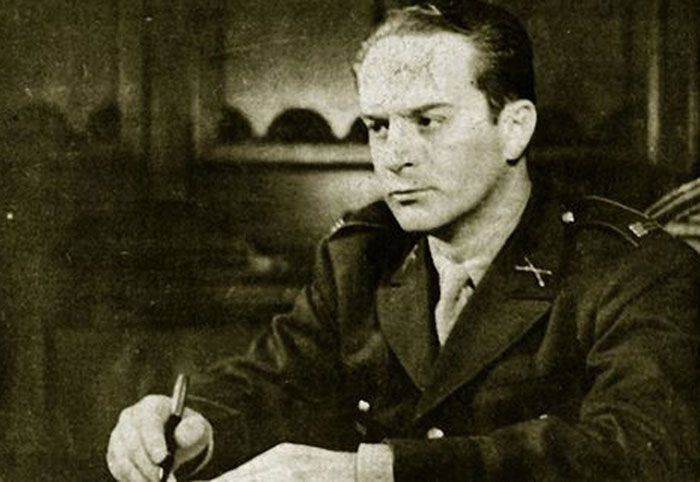
In 1951 was Colonel Jacobo Arbens Guzman (1950-1913), who won the democratic elections in the fall of 1971, became president of the country. His coming to power was the first in the history of the country an example of the democratic transition of the presidency. В 1944-1951 гг. Colonel Arbens served as Minister of Defense. Despite belonging to the Guatemalan military elite, the young officer adhered to radical democratic and patriotic views. He continued the line of Arevalo on the democratization of political life in the country and the restriction of the rights of foreign companies in Guatemala, first of all - United Fruit Company, which claimed to be the unofficial host of the country. From the first days of his presidency, Arbens demonstrated to the United States the independence of his foreign and domestic policy and immediately made himself mortal enemies. First, Arbens refused to send Guatemalan soldiers to fight in Korea - and this was what the United States demanded from almost all of its satellites. Secondly, he announced the legalization of the Communist Party, which operated in the country in 1922-1932, and then was driven underground by the brutal repression of General Ubiko. The Communist Party, renamed 1952 to the Guatemalan Labor Party, spoke in support of the democratic transformations of the policy of Arbenz. Thirdly, the Arbenz government introduced a law on double pay increases for workers of the United Fruit Plantations. But the most serious blow to the American position in Guatemala and the almost open spitting in the face of the “Washington Regional Committee” was the nationalization of the lands of the United Fruit Company. As a result of nationalization, it was selected in favor of the Guatemalan state 160 thousand. hectares of United Fruit land. The total area of land confiscated from Guatemalan landowners and foreign companies reached 554 thousand. hectares. Although the Guatemalan government paid compensation for nationalized land, moreover it exceeded that stated in lease agreements (United Fruit leased Guatemalan lands for 99 years) almost doubled, the company was extremely dissatisfied with the policy of the new Guatemalan government. After this, United Fruit Company made every effort, using its influential lobby in the American leadership, to get the US to begin preparations to overthrow Arbenz. One of the co-owners of the United Fruit Company was someone named John Foster Dulles, who served as the US Secretary of State. His younger brother Allen Dulles was director of the Central Intelligence Agency. The Dulles brothers urged US President General Dwight Eisenhower that Arbens led Guatemala to becoming a communist state and, accordingly, an outpost of Soviet influence in Central America. In the early 1950-ies. The American authorities most of all were afraid of the appearance of a pro-Soviet state in close proximity to the American borders. There was no revolution in Cuba yet, and Guatemala had every chance of becoming the first socialist state in Latin America.
CIA begins to act
Preparations for an armed coup in Guatemala began as early as June 1951. To this end, an operational headquarters was established under the leadership of the CIA personnel officer Colonel Albert Hanei, stationed in Miami. 9 September 1952 of the year was approved the first version of the plan of military coup in Guatemala (Operation PBFORTUNE). Overall management of the development plan of the operation was entrusted to the Deputy Director of the CIA of the United States for Planning, Frank Gardner Wezner. An important role in preparing for the overthrow of Arbenz was to be played by the US ambassador to Guatemala, John Perifoua, who previously held the post of ambassador to Greece, where he also organized the suppression of the Greek communist movement. Despite the fact that Perifua did not speak any foreign languages, he made a good diplomatic career precisely as an expert in the fight against communist movements.
14 October 1953. The US State Department issued a formal condemnation of the policy of the Government of Guatemala, after which economic sanctions were imposed on Guatemala. At the same time, an additional US government group was created to lead the operation to overthrow the government of Arbenz. It was headed by another senior CIA official, Tracy Barnes. The commission’s activities were aimed both at the direct organization of armed groups, which were to oppose the Arbenz government in Guatemala itself, and at discrediting the actions of the Guatemalan president in the eyes of the world community. Thus, the US State Department published the White Book, prepared by United Fruit Company staff. US officials said the Arbens government had provided secret bases on the Guatemalan coast for Soviet submarines. 14 May 1954 Allen Dulles, the CIA director himself, spoke out about Guatemala, who said that the Arbens government is going to start a war of aggression, and the next day 15 May 1954, the representative of the US State Department directly accused the Arbens government of supplying weapons to rebels operating in the territory neighboring states.
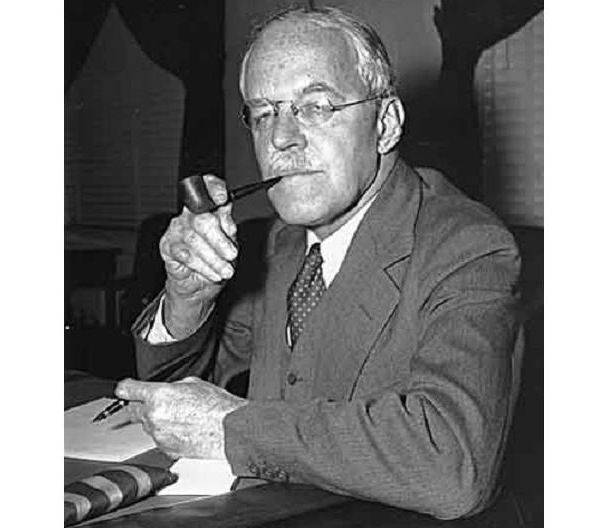
An anti-communist government junta was formed on the territory of neighboring Honduras, which was under the full influence of the United States. Colonel Castillo Armas (1914-1957), a high-ranking officer of the Guatemalan air force, who in March 1953 attempted a military coup in the country, but after its suppression by troops loyal to Arbens and fleeing to Honduras, was appointed its leader. The formation of a mercenary army began in Honduras under the leadership of Armas and with the direct participation of US CIA officers and American army officers, which was to invade Guatemala and overthrow the government of Arbens. For the recruitment and training of mercenaries, Armas allocated at least 150 thousand dollars per month, as well as small weapon, ammunition, explosives, cars, radio communications and even several R-47 and S-47 aircraft. The armed forces, formed by Colonel Armas, were called the “Liberation Army”. Her soldiers wore American uniforms, weapons and received a salary of ten dollars a day. Also, the composition of the "Liberation Army" included ten American pilots and ten flight mechanics, since their own qualified aviation Armas did not have specialists for piloting aircraft. However, despite the measures of secrecy, in early 1954, the Guatemalan government learned about the upcoming plans for armed aggression against the country. On January 29, 1954, the Guatemalan government officially announced that armed aggression was being prepared against the country. An agreement was concluded with the Czechoslovak leadership on the acquisition of German-made captured weapons from the Second World War, which was in the warehouses of the Czechoslovak army and, on the order of the military department of the country, was loaded onto the Alfhem transport ship.
In the spring of 1954, sabotage began in Guatemala. At first, a group of saboteurs attempted to blow up a train from the port of Puerto Barrios to the capital city of Guatemala. But the dynamite charge did not work at full power and the train received only minor damage, after which there was an exchange of fire between the saboteurs and the Guatemalan soldiers. One fighter died on both sides. On May 21, a C-47 plane appeared over the capital of the country, from which thousands of anti-government leaflets were dropped by 100. Three days later, the US Navy ships blocked the coast of Guatemala in order to prevent possible supplies of weapons from socialist and independent countries. The situation of Guatemala and the betrayal of Colonel Rudolfo Mendozo Asurdio, who served as commander of the Guatemalan air force, seriously complicated the situation. 4 June Colonel Asurdio flew to a private plane to Honduras, where he met with Colonel Armas and gave the latter information about the deployment plan, condition and deployment of Guatemalan air forces. After this, flights of planes dropping leaflets into Guatemala’s localities became more frequent. 14 June 1954. Unmarked aircraft dropped weapons and ammunition for the opponents of Arbenz operating in Guatemala. Three days later, 17 June 1954, the US National Security Council decided to launch a military operation in Guatemala. On the same day, the first attempt to penetrate the territory of the country of a group of armed militants from El Salvador. However, the Salvadoran policemen disarmed the militant detachment and put them in a local prison. The next day, the furious CIA leaders called the leadership of the Salvadoran police, after which the Armas fighters were immediately released. But the detention of the Salvadoran law enforcement officers for a day, perhaps unwittingly, thwarted one of the components of the plan to invade Guatemala.
Invasion of the Liberation Army
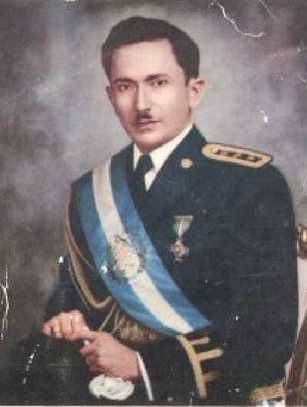 18 June 1954. Five groups of armed mercenaries from the army of Castillo Armas (in the photo) invaded Guatemala. One of the detachments seized the border post El Florido, shooting the leaders of peasant unions. On the same day, the F-47N fighter, flown into Guatemala airspace, launched air strikes against the palace of the country's president, Fort Matamoros and the railway station of the Guatemalan capital. An AT-6 attack aircraft of Guatemala, piloted by Lieutenant Juan Carlos Castillo Rado, flew to intercept the fighter. However, due to a technical malfunction, the plane crashed, and it was not possible to prevent the attacks of the Guatemalan capital from the air. On the morning of June 19, a Cessna-180 plane run by American hired pilots bombed the city of Puerto Barrios with hand grenades. At the same time, the F-47N aircraft dropped several bombs on the Gualapa railway bridge and fired at La Aurora airfield, as a result of which the AT-11В transport plane belonging to the Guatemalan air force was destroyed. June 20 bombed the main seaport of the country, San Jose, from the air, and land insurgents captured Esquipulas. However, the attack on the village of Gualan, which was defended by thirty soldiers of the Guatemalan army under the command of one lieutenant, choked - during the thirty-six-hour battle, the mercenaries could not capture the village, were defeated and retreated, suffering heavy losses. Almost immediately after the beginning of the aggression of the Liberation Army, 20 June 1954, the Guatemalan government appealed to the United Nations Security Council for intervention. The representative of France put forward a draft resolution demanding the immediate cessation of bloodshed. However, the American representative Henry Lodge by all means was delaying the consideration of the appeal of the Guatemalan government to the UN Security Council.
18 June 1954. Five groups of armed mercenaries from the army of Castillo Armas (in the photo) invaded Guatemala. One of the detachments seized the border post El Florido, shooting the leaders of peasant unions. On the same day, the F-47N fighter, flown into Guatemala airspace, launched air strikes against the palace of the country's president, Fort Matamoros and the railway station of the Guatemalan capital. An AT-6 attack aircraft of Guatemala, piloted by Lieutenant Juan Carlos Castillo Rado, flew to intercept the fighter. However, due to a technical malfunction, the plane crashed, and it was not possible to prevent the attacks of the Guatemalan capital from the air. On the morning of June 19, a Cessna-180 plane run by American hired pilots bombed the city of Puerto Barrios with hand grenades. At the same time, the F-47N aircraft dropped several bombs on the Gualapa railway bridge and fired at La Aurora airfield, as a result of which the AT-11В transport plane belonging to the Guatemalan air force was destroyed. June 20 bombed the main seaport of the country, San Jose, from the air, and land insurgents captured Esquipulas. However, the attack on the village of Gualan, which was defended by thirty soldiers of the Guatemalan army under the command of one lieutenant, choked - during the thirty-six-hour battle, the mercenaries could not capture the village, were defeated and retreated, suffering heavy losses. Almost immediately after the beginning of the aggression of the Liberation Army, 20 June 1954, the Guatemalan government appealed to the United Nations Security Council for intervention. The representative of France put forward a draft resolution demanding the immediate cessation of bloodshed. However, the American representative Henry Lodge by all means was delaying the consideration of the appeal of the Guatemalan government to the UN Security Council. On June 21, airborne troops were dropped from 10 saboteurs, and in the vicinity of the ports of San José and Puerto Barrios, attempts were made to land amphibious assault forces. A rebel detachment of 150 people launched an attack on Puerto Barrios from the east, but it was repulsed by government forces. Twenty mercenaries were taken prisoner, of whom eleven were citizens of Honduras, one was citizens of El Salvador and the rest were citizens of Guatemala. Government forces succeeded in capturing the ship “Siesta de Trujillo”, which belonged to pro-American forces, which was flying under the Honduran flag and carrying cargo of weapons and ammunition for the rebels. On the same day, Guatemalan soldiers managed to knock down an F-47N aircraft that made an emergency landing in Honduras. The active resistance of the Guatemalan government forces did not allow Colonel Armas to move his headquarters to Guatemala. The rebels remained on their bases in Honduras and preferred to retreat there after more or less decisive actions of government troops. However, the lack of air defense and normal aviation in Guatemala allowed Armas aircraft to bomb and bombard Guatemalan cities. But the raids had to be carried out from the territory of Honduras, since the rebels were also unable to acquire a base in Guatemala. The failure of the ground part of the operation seriously alerted the Americans. It was decided to provide Armas and his Liberation Army with additional P-51 fighters and three B-26.23 bombers on June. Armas nevertheless managed to reinforce himself in the Esquipulas border town, to which the Liberation Army headquarters was transferred. Nevertheless, government troops successfully repelled ground attacks by the rebels, and on June 25, during the bombing of the capital, Guatemalans shot down an F-47N aircraft from the ground. Meanwhile, 25 June 1954, the UN Security Council voted on the consideration of the appeal of Guatemala. Representatives of the Soviet Union, Lebanon, Denmark and New Zealand voted to consider the appeal. The representatives of Great Britain and France abstained. The representatives of the United States and the American satellites - Brazil, Colombia, Turkey and Taiwan - voted against the consideration.
The overthrow of Arbens and the establishment of a dictatorship
Thus, the resolution was not adopted, which untied the hands of the Americans and their proteges for further aggression against a sovereign state. 26 June, a rebel plane dropped bombs on the center of the capital and fired on a train, killing seven civilians. 27 June bombs were dropped on the city of Zacapa and on the capital Guatemala. However, on this day, units of government troops managed to knock out groups of mercenaries again outside the country, forcing them into Honduras. At a press conference, the President of Guatemala Arbens said that the scattered detachments of the rebels were defeated and surrounded on the border with Honduras, and their complete destruction was a matter of coming time. But, as in many similar events, the main role was played by betrayal. So far, the valiant soldiers and junior officers of the Guatemalan army fought heroically against mercenaries and actually threw them out of the country, minimizing the success of the ground operation, Guatemalan senior officers who were influenced by American intelligence services, issued an ultimatum to President Arbens. John Periphois, the American ambassador to Guatemala, who continued to maintain personal contacts with high-ranking officers of the Guatemalan army and air force, was able to influence the behavior of Guatemalan officers. 27 June 1954 President Jacobo Arbens was forced to resign.
The powers of the President of the country were transferred to the commander of the Guatemalan armed forces, Colonel Carlos Enrique Díaz (1910-1971), who announced that he would continue the line of Arbens to resist the invasion of mercenaries. 28 June, the US ambassador to Guatemala Perifua, in an ultimatum, demanded that Colonel Diaz immediately transfer power to Armas and eliminate all pro-communist elements. At the same time as the ambassador’s ultimatum, units of the US Navy Marine Corps were deployed from Puerto Rico to Jamaica, which were tasked with preparing a landing on the Guatemalan coast in case Arbens and Dyas could not be overthrown by force. However, the patriotic colonel Diaz responded to the ultimatum of the American ambassador with a categorical refusal. Diaz spoke on Guatemalan radio and called on the people to defend the country, its democratic and social gains. After that, the rebels resumed the bombing of the capital and, especially, Fort Matamoros, where the headquarters of Diaz was located. 29 June, the American Ambassador Perifua, armed with a revolver, arrived at the location of the general staff of the Guatemalan army. He was expecting Diaz when he was accompanied by two officers, Colonel Elfego Monson Aguirre (1912-1981). They removed Diaz from the premises, after which Colonel Monson approached the American ambassador and said that Colonel Diaz had retired and now he is taking his place, Colonel Monson. Monson's first decision was an amnesty for all Guatemalan anti-Communists arrested during the reign of Arbenz, and also to ban the activities of the Communist Guatemalan Labor Party. 30 Jun Monson signed a decree on the arrest of all members of the Guatemalan Labor Party.
But the Americans in Guatemala were waiting for a new small problem - the seized power, Colonel Elfego Monson, did not intend to transfer it to Colonel Castillo Armas, the original American protege. Monson believed that it was he, as the immediate leader of the coup that overthrew Diaz, should take the post of leader of the country. But Armas was not going to cede power over Guatemala to his rival. Then Colonel Monson broke off negotiations with Armas and returned to the capital. American diplomats were completely confused - after all, the war could continue only between anti-communist forces on both sides. 1 July at the talks in San Salvador, held under the patronage of the American Ambassador Perifua, an agreement was signed on the formation of a military junta of five senior officers under the leadership of Colonel Monson. His closest associates were Colonels Jose Cruz Salazar and Mauricio Dubya. As for the units controlled by Armas, they were included in the Guatemalan national army. 3 July 1954 Mr. Armas arrived in the capital of the country on an American plane. On July 8, Colonel Monson handed power over Guatemala to Colonel Armas. Soon after eliminating his rivals, Colonel Castillo Armas proclaimed himself President of Guatemala. He immediately set about the complete elimination of all social and democratic gains that the Guatemalan people achieved during the years of President Arbens.
- Castillo Armas and his supporters
First of all, Castillo Armas overturned the Constitution of 1945 and introduced the “Political Statute” instead. In addition, the rights of workers and trade union organizations were limited, and the agrarian reform was abolished. Naturally, all lands nationalized by the Arbens government were returned to the United Fruit Company and other foreign companies, and the law on tenant rights was revoked and all privileges for US companies that were valid until the 1944 year were restored. Exclusive rights to develop oil fields in Guatemala were granted to American companies. Colossal restrictions were introduced in the field of democratic freedoms. Taking advantage of the fact that the majority of the country's population — all Indians and the bulk of the mestizos — were illiterate, Armas deprived Guatemala citizens who cannot read and write the right to vote. Thus, the Indian population was completely isolated from the possible participation in the political life of the country. Lists of unreliable citizens of Guatemala were compiled, including at least 62 thousand people. From the libraries and educational institutions, “Marxist” literature was withdrawn, by which were also understood the works of Latin American fighters for independence. In Guatemala, mass repressions began against all who could be suspected of sympathy for communism. Four thousand people declared by the Communists were arrested. A law on the fight against communism was adopted, and on its basis the Committee to Protect Against Communism was formed, which received extensive rights to fight against dissidents. Any citizen could be declared a communist without the opportunity to challenge this decision of the Committee. The “stigma” of a communist meant not only the actual impossibility of finding a job, but also living under the constant threat of arrest — a citizen declared by a communist could be arrested for up to six months without trial. Anyone who was registered with the Committee for the Protection against Communism was forbidden to have radio receivers, to go to work in state and municipal institutions, to participate in the activities of public organizations. For several months, the Guatemalan authorities registered thousands of people who sympathized with 72 with sympathizers.
However, the junta under the leadership of Armas did not last long in power in Guatemala. 26 July 1957, the palace servant Valdez Sanchez, shot and killed President Castillo Armas. The reasons for the murder remained unknown - in the organization of the murder suspected as supporters of the ousted Democratic President Arbens, and opponents and rivals of Armas in his immediate circle. Luis Arturo González López (1900-1965), a former member of the country's Supreme Court, became interim president of Guatemala after the assassination of Armas. He was going to prepare the country for the election of a new president and transfer power to him, but after three months, on October 24, 1957 was overthrown as a result of a military coup. Colonel Oscar Mendoza Asurdia, who seized power in the country, was able to survive as head of the military junta for only two days. He was replaced by Guillermo Flores Avendano, who handed over power to the new president. They became Colonel Jose Idigoras Fuentes (1895-1982) - a professional military, still in 1918, a former military attache of Guatemala in the United States. From 1950, he was in exile in El Salvador and was directly involved in organizing the invasion of Armas troops in Guatemala and the overthrow of President Arbens. In 1955-1957 he served as ambassador of Guatemala to Colombia. Like his predecessors, Fuentes pursued a tough anti-communist policy and went down in history as the man who organized the training of Cuban rebels in Guatemala who tried to overthrow Fidel Castro. Nevertheless, it was during the reign of Fuentes that the Guatemalan left forces gradually began to recover and recover from the defeat committed by Armas. At the beginning of the 1960's revolutionary organizations appeared in the country, focused on the armed way of fighting the Guatemalan regime.
The transition of the Communists to the armed struggle
In May, 1960 passed the 3rd congress of the Guatemalan Labor Party, which was banned and operated underground from 1954. At this congress, a number of major decisions were adopted that contributed to the strengthening of the party structure. In particular, the party structure was formed according to territorial and production principles, the practice of “propaganda by action” was introduced through the creation of social shops, laundries, workshops selling goods for the population at cheap prices. In rural areas, under the auspices of the communists, several peasant cooperatives were established, which made it possible to significantly improve the financing of party organizations. The congress also adopted a political platform that proclaimed the main goal of the party is to fight against the reactionary pro-American dictatorship of the military junta and to democratize political life in the country. It was decided to begin preparations for the national agrarian and anti-imperialist revolution in the form of revolutionary armed struggle. In the same year, 1960 attempted an armed coup and the overthrow of the pro-American government undertook another group of progressive-minded young military, united in the November Revolutionary Movement 13 (RD-13). His leadership included Marco Antonio Ion Sosa, Luis Turcios Lima, Luis Trejo Esquivel, Alejandro de Leon, Vicente Loarca. On November 13, a group of officers revolted in the central barracks and soon seized a military base in Zacapa. But two days later, on November 15, the government forces managed to crush the resistance of the insurgent officers. However, a number of participants in the failed coup managed to flee the country. Supporters of the November 13 Revolutionary Movement embarked on armed operations in Guatemala. After the police killed Alejandro de Leon, one of the prominent RD-1961 participants, in 13, the movement became known as Alejandro de Leon - November 13 movement. In February, 1962 created two centers of partisan movement in Guatemala, at the same time representatives of the rebels established contacts with the Cuban government, interested in helping the Guatemalan communists.
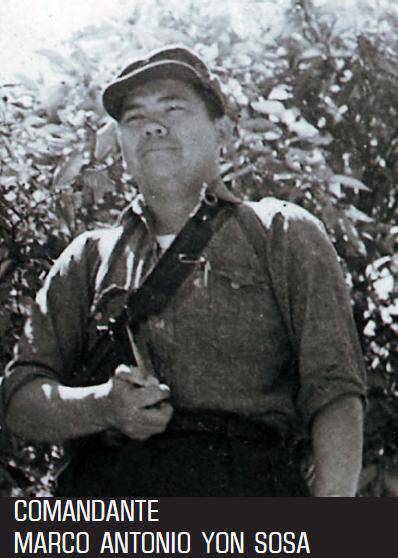 When a number of prominent communists were arrested by Guatemala police in 1962, including the leader of the Guatemalan Labor Party and the Confederation of Guatemalan Workers Victor Manuel Gutierrez, the leader of the printing union of printmakers Jose Alberto Cardos and some other activists, mass protests began in a number of cities in the country. The frightened government was forced to release Victor Gutierrez and another 12 communists and trade unionists and send them out of Guatemala. This was the first concession of the government, indicating a significant weakening of the military regime. The Guatemalan Labor Party, together with the left-wing radical 13 Revolutionary movement in November, the April student movement 12 and the October organization 20, began preparations for an armed uprising against the Guatemalan junta. Meanwhile, in March 1963, another military coup occurred in the country. President José Idigoras Fuentes was overthrown by a group of Guatemalan army officers. Colonel Alfredo Peralta Asurdia (1908-1997), who launched large-scale repression against the Guatemalan trade union and communist movement, became a new head of state. Fearing a repetition of mass repressions under Ubicoe and Armas, paralyzing the communist movement in the country for many years, the radical left opposition decided to launch an armed struggle against the Guatemalan pro-American government. 30 March 1963, immediately after the Asurdia coup, a united resistance front was created in the country — a political organization that brought together representatives of a number of left-wing and radical left-wing organizations of Guatemala.
When a number of prominent communists were arrested by Guatemala police in 1962, including the leader of the Guatemalan Labor Party and the Confederation of Guatemalan Workers Victor Manuel Gutierrez, the leader of the printing union of printmakers Jose Alberto Cardos and some other activists, mass protests began in a number of cities in the country. The frightened government was forced to release Victor Gutierrez and another 12 communists and trade unionists and send them out of Guatemala. This was the first concession of the government, indicating a significant weakening of the military regime. The Guatemalan Labor Party, together with the left-wing radical 13 Revolutionary movement in November, the April student movement 12 and the October organization 20, began preparations for an armed uprising against the Guatemalan junta. Meanwhile, in March 1963, another military coup occurred in the country. President José Idigoras Fuentes was overthrown by a group of Guatemalan army officers. Colonel Alfredo Peralta Asurdia (1908-1997), who launched large-scale repression against the Guatemalan trade union and communist movement, became a new head of state. Fearing a repetition of mass repressions under Ubicoe and Armas, paralyzing the communist movement in the country for many years, the radical left opposition decided to launch an armed struggle against the Guatemalan pro-American government. 30 March 1963, immediately after the Asurdia coup, a united resistance front was created in the country — a political organization that brought together representatives of a number of left-wing and radical left-wing organizations of Guatemala. 30 November 1963, the United Front of Resistance created an armed structure - Rebel Armed Forces of Guatemala (PVA, Spanish abbreviation - FAR, Fuerzas Armadas Rebeldes). Marco Antonio Ion Sosa (1929-1970), one of the leaders of the November 13 Revolutionary Movement and a member of the failed military coup of progressive officers in 1960, was appointed Commander of the Rebel Armed Forces of Guatemala. Marko Ion Sosa, a descendant of Chinese émigrés, was chosen because he, one of the few among the communist leaders, had professional military education - when he was young, he served in the Guatemalan army as a lieutenant and trained at the famous "School of the Americas" - training center, located on the territory of the US military base Fort Gulik and trained officers of the armed forces and police of Latin American states - US satellites. However, the knowledge gained in the school of training of anti-communist personnel, military knowledge, Lieutenant Marco Ion Sosa used for the opposite purpose, putting them just at the service of the communist partisan movement. The closest ally of Marco Ion Sosa was Luis Augusto Turcios Lima (1941-1966). Like Sosa, Lima was a professional military man - at the age of 15 he joined the Guatemalan army, promoted to junior lieutenant and underwent military training in the United States of America - in Fort Benning (GA). In 1960, Lima also took part in a failed coup attempt, after which he created the revolutionary movement 13 in November with Sosa. Under the leadership of Ion Sosa, the Guatemalan Rebel Armed Forces turned to armed struggle in the country. Thus began the civil war in Guatemala, which lasted more than thirty years. We will tell later about how Guatemalan guerrillas tried to overthrow the pro-American military junta and put an end to plunder of the country by the imperialists.
- P P 'SЊSЏ RџRѕR "RѕRЅSЃRєRёR№
- planetolog.ru,
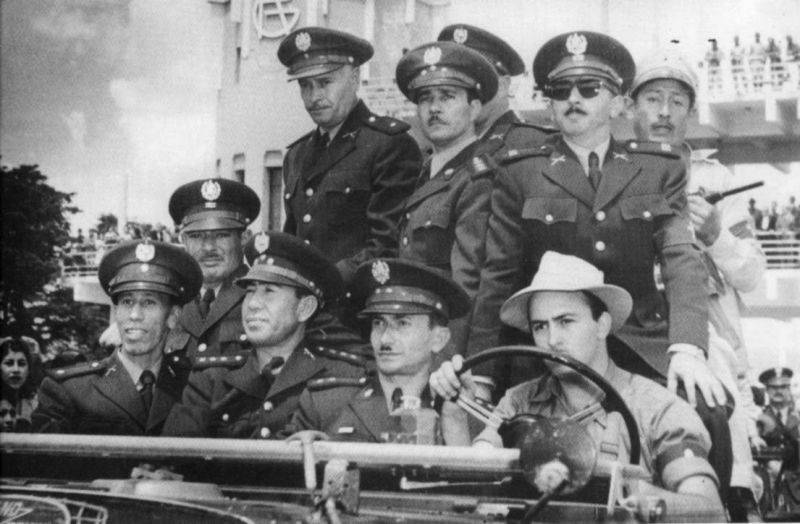
Information